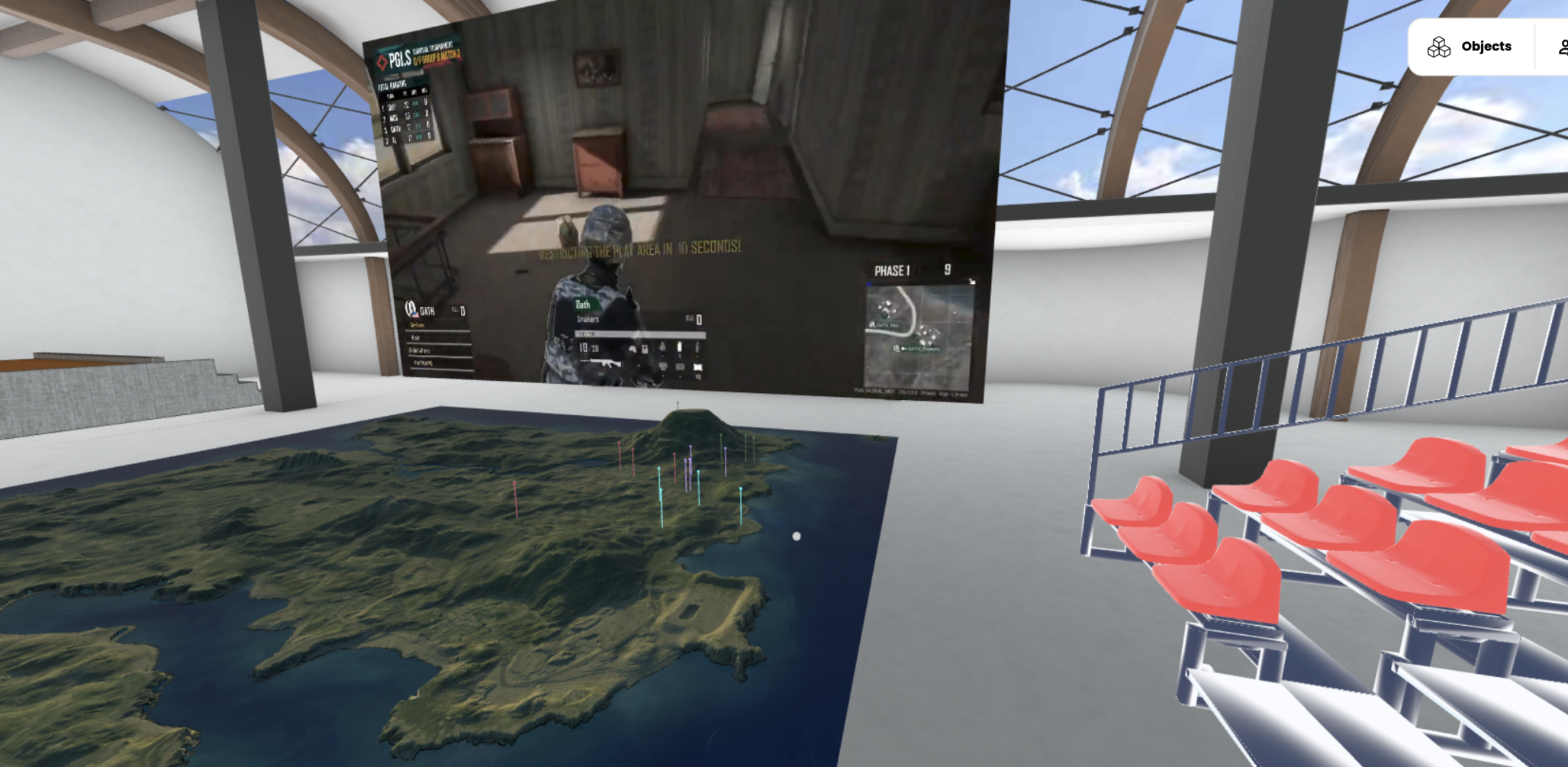Changing the Game: Bringing Sports to the Virtual Stadium

From the Fortnite challenge on late-night TV to politicians meeting constituents in-game, it’s no secret that gaming has risen to become an incredibly profitable entertainment industry—a trend that has accelerated in the past year as consumers have flocked to online environments for connection.
Just look at esports’ growth: the esports ecosystem is expected to surpass $1 billion in revenue this year, most of which will come from sponsorship and advertising. So, while gaming audiences have historically been difficult to connect with, emerging interest in esports has caught the attention of brands.
This development comes at a time when consumption of traditional sports has waned. So, will esports replace traditional sports completely? Of course not—but the ways that gaming audiences connect and consume could offer a glimpse at broadcast viewing experiences of tomorrow.
Esports Broadcasts Pull Fans into the Game
While esports organize in competitive leagues, they uniquely blend together what happens both in the game and in the arena. Technology like extended reality lets a broadcast drop character models directly in front of the characters who choose them. Meanwhile, commentators may stand beside an augmented reality diorama of the game to show replays in immersive detail. These innovations stand in contrast to watching a physical sport. “Cameras in a sports stadium are still very flat and traditional,” says Geert Eichhorn, Innovation Director at MediaMonks. “What fans want is an environment you can walk around and engage with.”
Traditional sports have long sought ways to make the viewing experience more engaging to audiences at home, though those experiences have largely remained linear. Today’s sports audiences connect through a variety of digital channels to seek new ways of getting closer to the action, and esports audiences are accustomed to interactive viewing experiences delivered through livestreaming channels like Twitch or YouTube. Sports can look toward esports’ innovation to enable more engaging experiences that break down the barriers between the audience and the game—with brands serving as the MVP’s that power these experiences.
Building the Virtual Stadiums of the Future
For esports and traditional sports alike, virtual stadiums set the stage for immersive and interactive viewing experiences. “You have to think: what can we offer in a virtual space—how are we using the third dimension?” says Eichhorn. “You can do more than just recreate a stadium by letting spectators look beyond the fixed angle of a camera.”
What’s more, much like a physical venue, a virtual one opens up unique sponsorship opportunities for brands, whether it’s more measurable and personalized ad targeting or branded stadiums.

The MediaMonks Labs team has built its own virtual stadium that draws on data from Player Unknown's Battlegrounds, tracking each player's location on a 3D map in real time.
When it comes to consuming videogames within a virtual stadium, APIs are crucial. An API funnels data from the game in and into the viewing platform in real time—for example, the health of each player, their current equipment, whether they’re in a vehicle and more. In-game assets like maps, player models and animations can also translate seamlessly into the viewing environment.
MediaMonks Labs, our R&D team, has experimented with this technology by building their own virtual venue in Mozilla Hubs. Inside, a small group of viewers can meet together to watch a game of Player Unknown’s Battlegrounds both traditionally (a recording on a stream) and through a 3D map that shows each player’s location in real time—a lot like the park map featured in the HBO series Westworld.
Eichhorn explains why the prototype is limited in the in-game data it uses: “Many game developers are guarded with API access to data in an effort to minimize cheating,” he says. “But a brand or creative partner working directly with a developer to virtualize a competition would have access to much more.”
Sports can Take a Page from the Esports Playbook
We’re still a way off from watching a full traditional game at that level of detail. “Volumetric in real time is difficult for live sports, because it takes days to stitch together everything into a 3D file.” Though some are bridging the gap, like NBA’s games broadcast in Oculus venues, which lets viewers from afar watch together in a virtual environment—albeit from a linear, fixed-camera perspective.

The Soul & Science app made in collaboration with Intel Studios transports athletes to your immediate surroundings, letting you watch the action from any angle.
However limited immersive broadcasting within a virtual venue may remain today, there is a strong potential to fuel entirely new content experiences. “Intel creates replay clips through its True View volumetric capture,” says Nora Henrikkson, Managing Director at MediaMonks. “These clips pause at a key moment to let the viewer look around in 360 degrees. In the future, it would be cool to broaden that experience and put more control in spectators’ hands.” The same technology powers our work with Intel, which uses volumetric augmented reality to let sports enthusiasts watch, rewind and examine athletes’ moves from any angle.
Esports are branching out and following the lead of traditional sports—like franchising teams, organizing in season matches—but traditional sports can likewise learn from their digital counterparts. At the very least, virtual stadiums set the stage for more impactful, engaging and interactive digital experiences that bring people together, a goal shared by both industries. As brands aim to connect with audiences as well, virtualized environments and platforms that level-up the viewing experience offer an opportunity to change the game forever.
Related
Thinking
Make our digital heart beat faster
Get our newsletter with inspiration on the latest trends, projects and much more.
Media.Monks needs the contact information you provide to us to contact you about our products and services. You may unsubscribe from these communications at any time. For information on how to unsubscribe, as well as our privacy practices and commitment to protecting your privacy, please review our Privacy Policy.



